Abstract
The full primary structure of the very potent opioid peptide dynorphin, from porcine pituitary, has been determined. It is (H)Tyr-Gly-Gly-Phe-Leu-Arg-Arg-Ile-Arg-Pro-Lys-Leu-Lys-Trp-Asp-Asn-Gln(OH). The synthetic peptide with this sequence behaves identically to natural dynorphin in a number of ways, and it has the same potency in the guinea pig ileum myenteric plexus--longitudinal muscle bioassay. The potency is accounted for by the first 13 residues.
Full text
PDF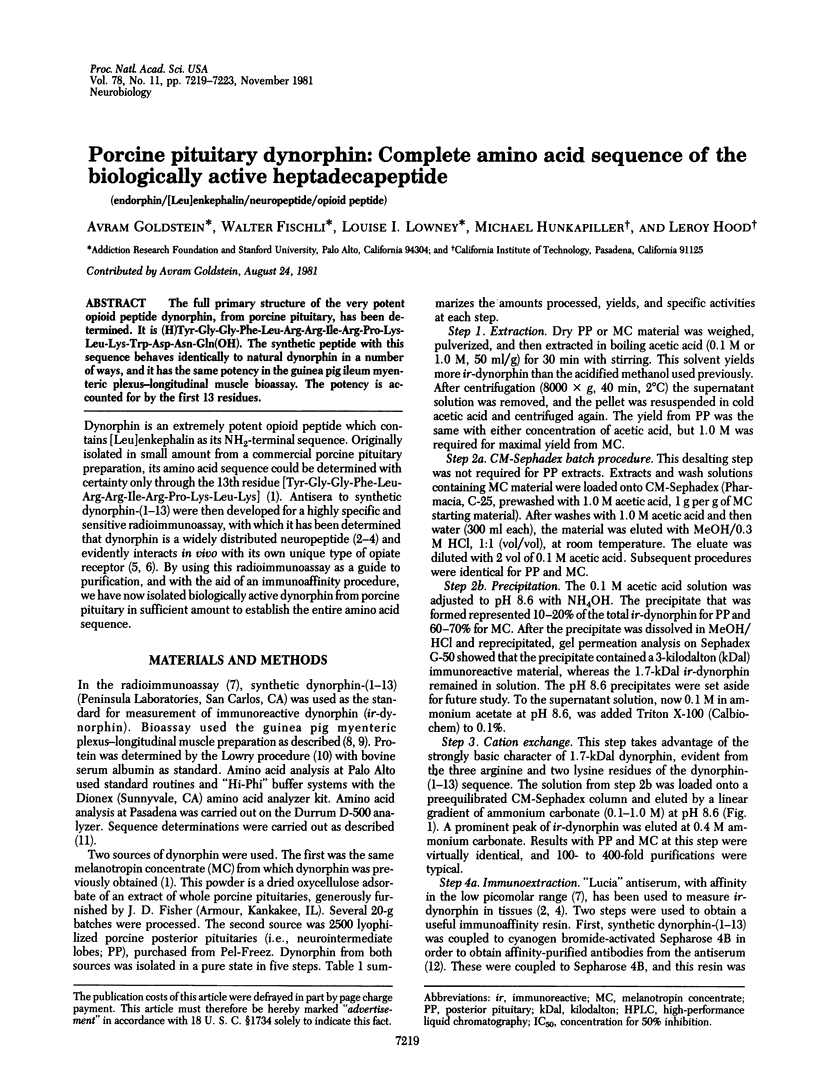
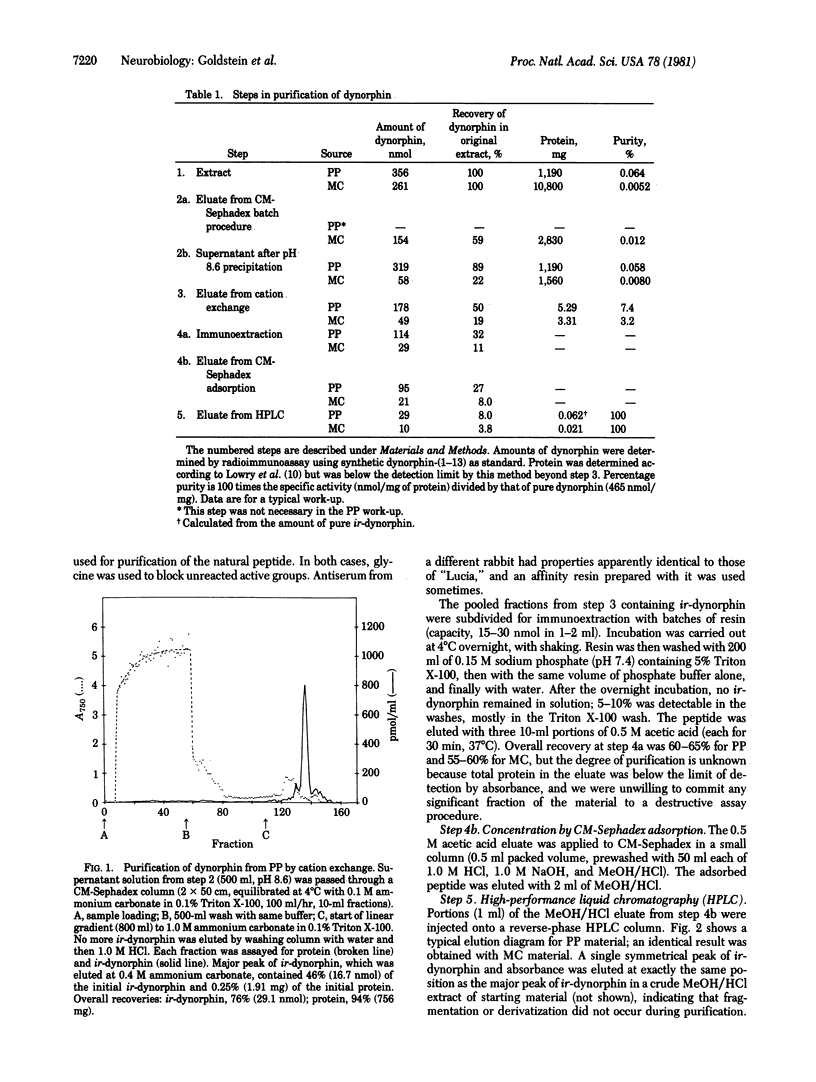
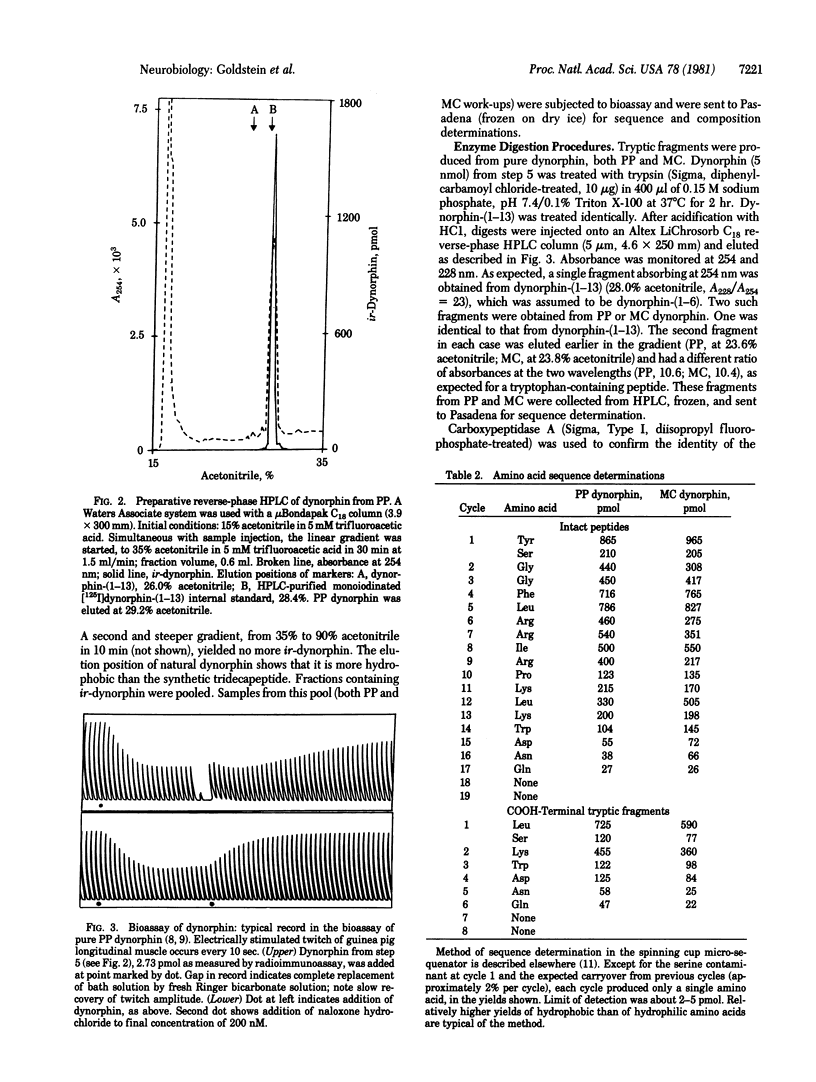
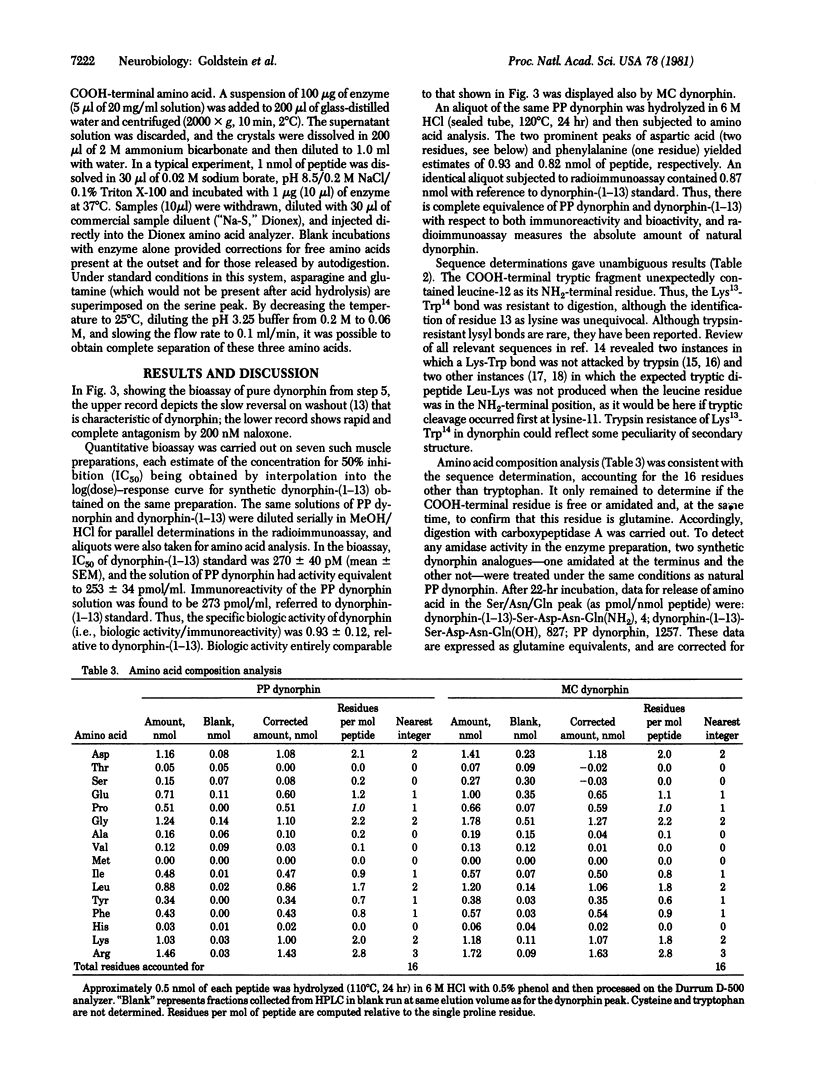
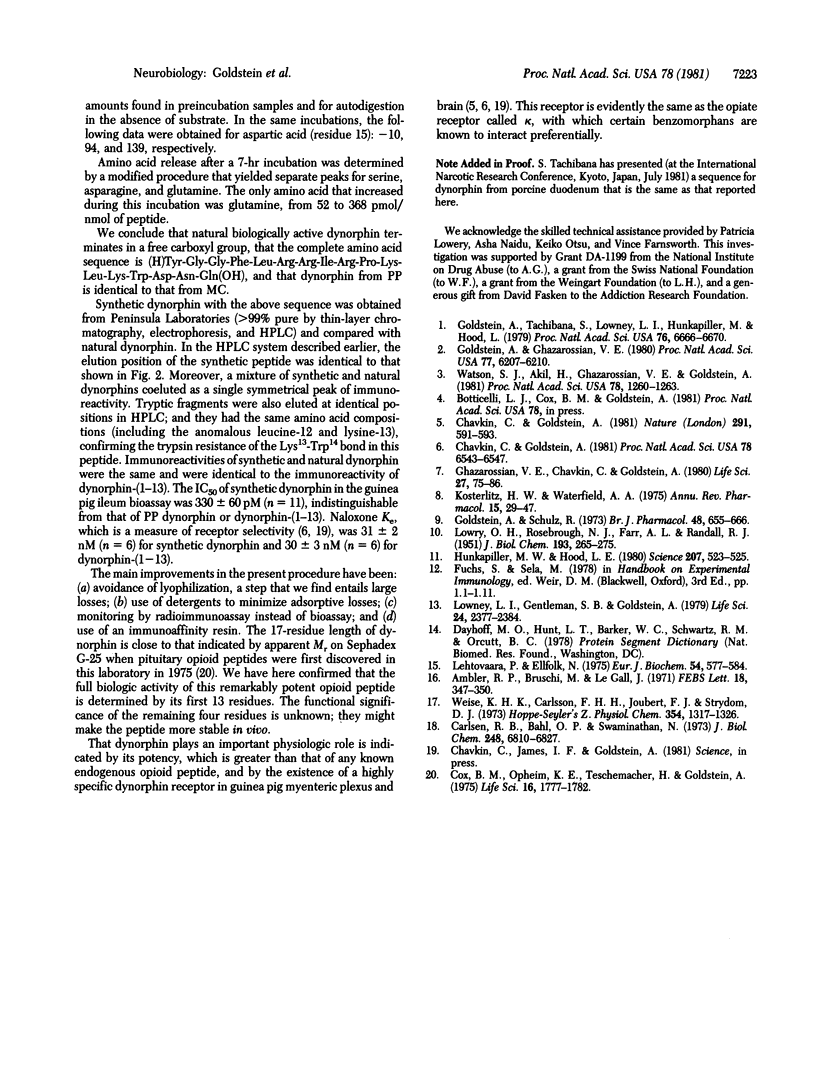
Selected References
These references are in PubMed. This may not be the complete list of references from this article.
- Ambler R. P., Bruschi M., Le Gall J. The amino acid sequence of cytochrome c(3) from Desulfovibrio desulfuricans (strain el agheila Z, NCIB 8380). FEBS Lett. 1971 Nov 1;18(2):347–350. doi: 10.1016/0014-5793(71)80483-0. [DOI] [PubMed] [Google Scholar]
- Carlsen R. B., Bahl O. P., Swaminathan N. Human chorionic gonadotropin. Linear amino acid sequence of the beta subunit. J Biol Chem. 1973 Oct 10;248(19):6810–6827. [PubMed] [Google Scholar]
- Chavkin C., Goldstein A. Demonstration of a specific dynorphin receptor in guinea pig ileum myenteric plexus. Nature. 1981 Jun 18;291(5816):591–593. doi: 10.1038/291591a0. [DOI] [PubMed] [Google Scholar]
- Chavkin C., Goldstein A. Specific receptor for the opioid peptide dynorphin: structure--activity relationships. Proc Natl Acad Sci U S A. 1981 Oct;78(10):6543–6547. doi: 10.1073/pnas.78.10.6543. [DOI] [PMC free article] [PubMed] [Google Scholar]
- Cox B. M., Opheim K. E., Teschemacher H., Goldstein A. A peptide-like substance from pituitary that acts like morphine. 2. Purification and properties. Life Sci. 1975 Jun 15;16(12):1777–1782. doi: 10.1016/0024-3205(75)90272-6. [DOI] [PubMed] [Google Scholar]
- Goldstein A., Ghazarossian V. E. Immunoreactive dynorphin in pituitary and brain. Proc Natl Acad Sci U S A. 1980 Oct;77(10):6207–6210. doi: 10.1073/pnas.77.10.6207. [DOI] [PMC free article] [PubMed] [Google Scholar]
- Goldstein A., Schulz R. Morphine-tolerant longitudinal muscle strip from guinea-pig ileum. Br J Pharmacol. 1973 Aug;48(4):655–666. doi: 10.1111/j.1476-5381.1973.tb08254.x. [DOI] [PMC free article] [PubMed] [Google Scholar]
- Goldstein A., Tachibana S., Lowney L. I., Hunkapiller M., Hood L. Dynorphin-(1-13), an extraordinarily potent opioid peptide. Proc Natl Acad Sci U S A. 1979 Dec;76(12):6666–6670. doi: 10.1073/pnas.76.12.6666. [DOI] [PMC free article] [PubMed] [Google Scholar]
- Hunkapiller M. W., Hood L. E. New protein sequenator with increased sensitivity. Science. 1980 Feb 1;207(4430):523–525. doi: 10.1126/science.7352258. [DOI] [PubMed] [Google Scholar]
- Kosterlitz H. W., Waterfield A. A. In vitro models in the study of structure-activity relationships of narcotic analgesics. Annu Rev Pharmacol. 1975;15:29–47. doi: 10.1146/annurev.pa.15.040175.000333. [DOI] [PubMed] [Google Scholar]
- LOWRY O. H., ROSEBROUGH N. J., FARR A. L., RANDALL R. J. Protein measurement with the Folin phenol reagent. J Biol Chem. 1951 Nov;193(1):265–275. [PubMed] [Google Scholar]
- Lehtovaara P., Ellfolk N. The amino-acid sequence of leghemoglobin component a from Phaseolus vulgaris (kidney bean). Eur J Biochem. 1975 Jun;54(2):577–584. doi: 10.1111/j.1432-1033.1975.tb04170.x. [DOI] [PubMed] [Google Scholar]
- Lowney L. I., Gentleman S. B., Goldstein A. A pituitary endorphin with novel properties. Life Sci. 1979 Jun 18;24(25):2377–2384. doi: 10.1016/0024-3205(79)90536-8. [DOI] [PubMed] [Google Scholar]
- Watson S. J., Akil H., Ghazarossian V. E., Goldstein A. Dynorphin immunocytochemical localization in brain and peripheral nervous system: preliminary studies. Proc Natl Acad Sci U S A. 1981 Feb;78(2):1260–1263. doi: 10.1073/pnas.78.2.1260. [DOI] [PMC free article] [PubMed] [Google Scholar]
- Weise K. H., Carlsson F. H., Joubert F. J., Strydom D. J. Snake venom toxins. The purification of toxins VII1 and VII2, two cytotoxin homologues from banded Egyptian cobra (Naja haje annulifera) venom, and the complete amino acid sequence of toxin VII1. Hoppe Seylers Z Physiol Chem. 1973 Oct-Nov;354(10-11):1317–1326. doi: 10.1515/bchm2.1973.354.2.1317. [DOI] [PubMed] [Google Scholar]


